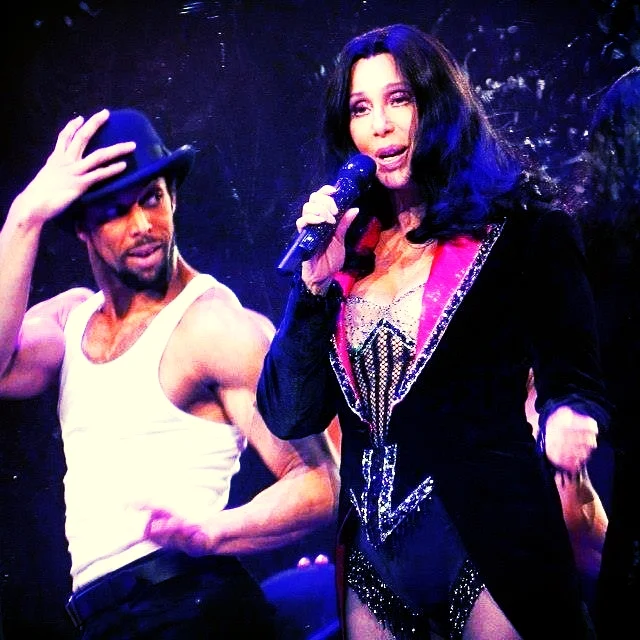Purple 1 dancers Grasan, me, Eric, Darius, James Harkness plus composers Brenda Russell and Stephen Bray (James Brown III was there in spirit)
We had already been standing outside of the dark theatre for about an hour and a half. Earlier, before this second preview, we had joined our Purple family of the original production in becoming a spectacle. Allee had interviewed and hugged us all, putting us on camera for new documentary footage. We had screamed words of good faith and support upstairs to the current cast members who thrust their heads out of the window with every measure of gladness that we were there.
We had seen the show, our hearts nudged in every direction by the continuity of this thing we were privileged enough to have started. We marveled at the divinity of this original production reunion occurring 10 years to the day from when the entire cast taped The Oprah Winfrey Show in Chicago.
Now, Eric Christian was standing on 45th Street recounting flight attendant perils to Grasan, James Harkness, me, and Darius—three of the four other original male dancer ensemble members of the original production and the tour assistant dance captain. Our full reversion to dressing room re-enactment tendencies fully engaged, Grasan and James had cast themselves (you know, to help out) as an obnoxious star’s assistant and another steward while Eric inserted himself between them and said, “You can tell me directly if there is anything you need.” He underscored all manner of the passive aggressive star being forced to deal with a flight attendant who aggressively refused to be disrespected.
This seems a digression, I know. But it’s important to understand because it cued a shady brother to saunter across the street seconds later aiming directly at our circle. We gathered our wits as New Yorkers accustomed to post-midnight crazy do, and prepared for what we knew was going to be a situation.
“Hey, I heard that you’re the person that gives out whatever people need,” he said to Eric, planting himself beside me.
“I was telling a story,” Eric said.
Oh, he must just wanted some money, and what a good beg segue. Except that I could smell traces of cologne still there, and he took too long a beat before the next question.
“Yeah, but are you the person people ask for what they need?” he said. “I heard it from across the street and that’s why I came over here.”
Eric reiterated that this was re-enactment.
Grasan reiterated too.
At this point we knew he was probably not homeless and there was no telling what was in his pocket. And is that a knife scar going from the lip crease to his cheek? We readied our guerilla counterattack protocols, should the need arise, especially since the stranger was now standing, hand in pocket, beside Eric’s plus-one.
To get us out of the Matrix de ja vu loop, Grasan asked the guy pointedly, “What do you do?”
“I offer sex?”
The entire group offered a resounding “Oh,” replete with satisfaction that this had turned the corner indeed. Of course. And Darius would blame me later, commenting that I always attract the crazy people (please see previous blog about the Sarah Palin/Tweet hybrid who turned a downtown Memphis Denny’s out years back).
The hand shoved in the sex offerers pocket pulled out a stack of business cards advertising….a car service?
I shifted his focus my way, taking the card and speaking for the others. “No, one is good, we’re all together. But wait. Connect the sex with the car service for me.” I waved the card.
“The limo will get you to the sex,” he said, smiling.
Most of us nodded. James Harkness’ face could suffer no pretense. Before words could follow his train of thought, I suggested the guy go down 45th toward Times Square, that he would get much better business.
He insisted I take his stack of cards instead, and I assured him I would make sure to distribute them to everyone else there.
“So, how do you like your sex?” he asked.
And scene.
Years ago as a present to Oprah, I re-wrote several journal entries as letters to her and to God to celebrate the epistolary approach of Alice Walker's masterpiece and called it To Walk Past a Field and Notice. Later, as a present to these guys and a few other cast members, I dug up the incriminating letters that I had taken out of the original. I called it Memoirs of a Purple Geisha (ask me if you're interested) and it includes dressing room gondola talks, scandals and a few NC-17 Lou Myers stories - is this hustler one of his exponents? Anyway, it was clear this night that The Color Purple, its stunning remnants, its artistic legacy, its bonding agency and the “Purple Geisha” are alive and well.
“You know I think Iron Bar is still open we should do that…” Grasan said to initiate our sprint.
We spent another hour on the corner of 45th and 8th once we made it there.
And I still have limo/sex business cards for anybody who wants them…










